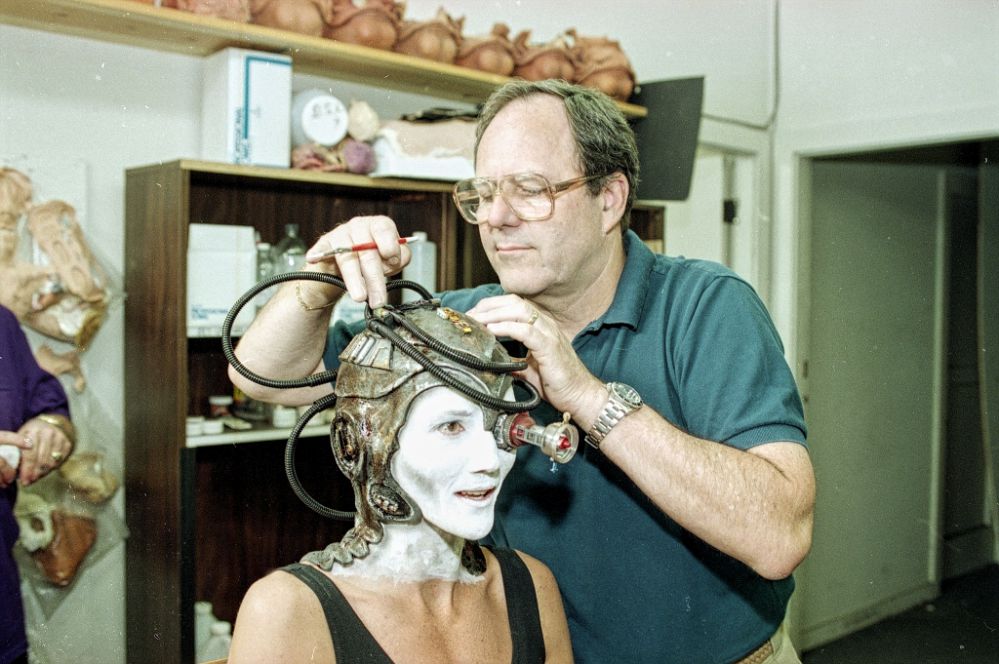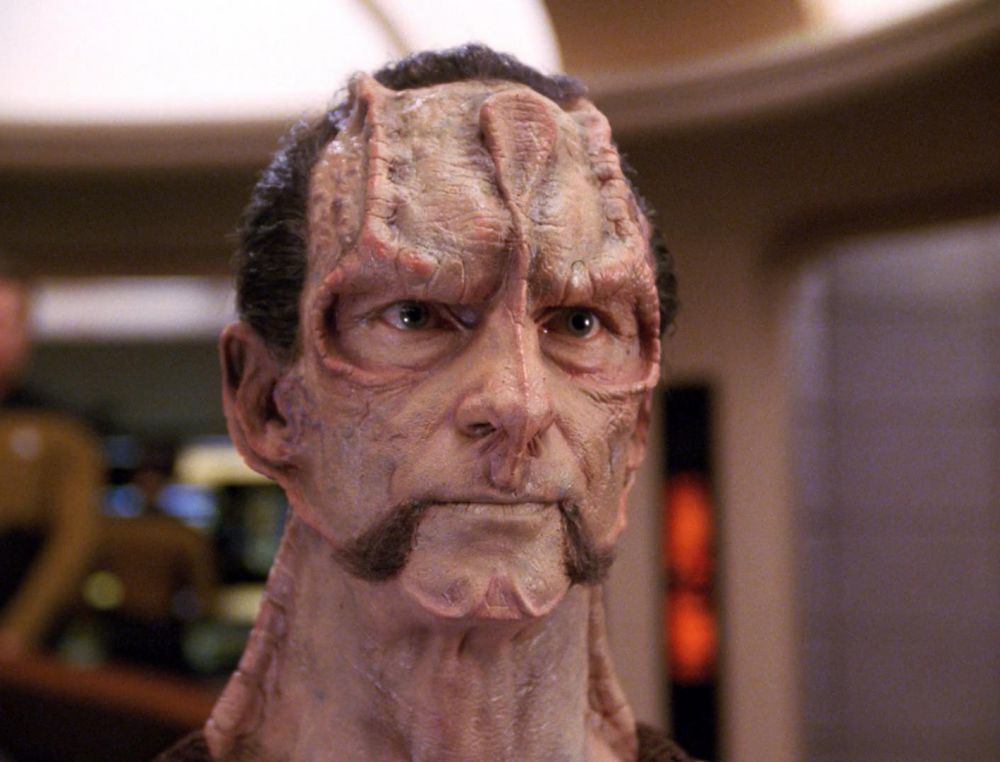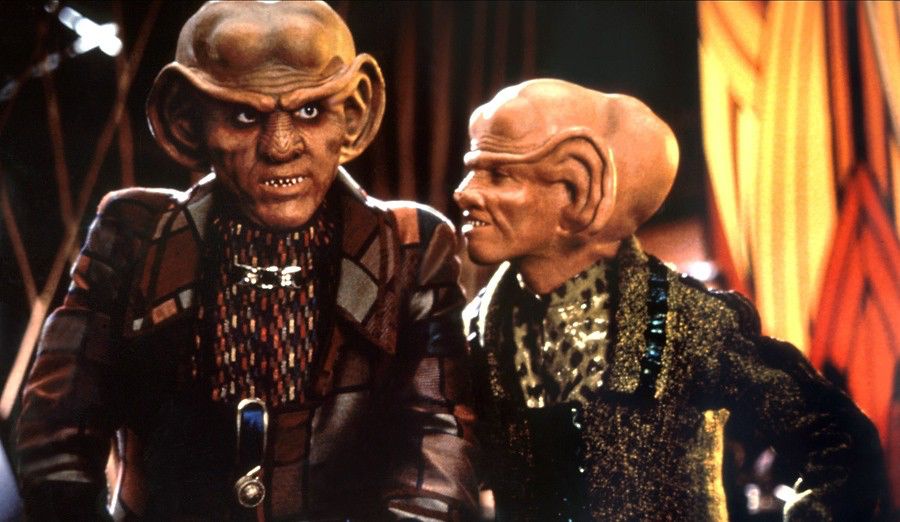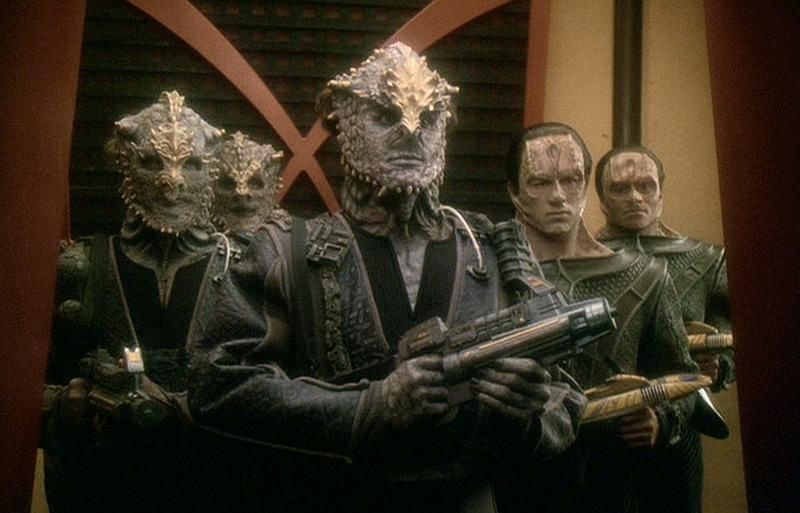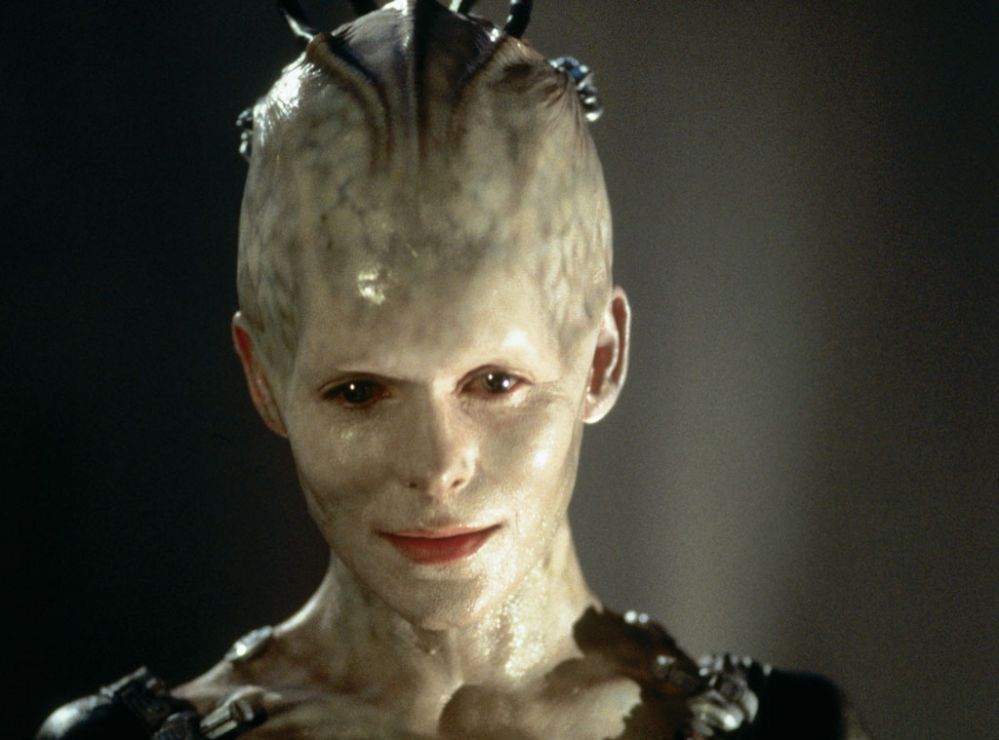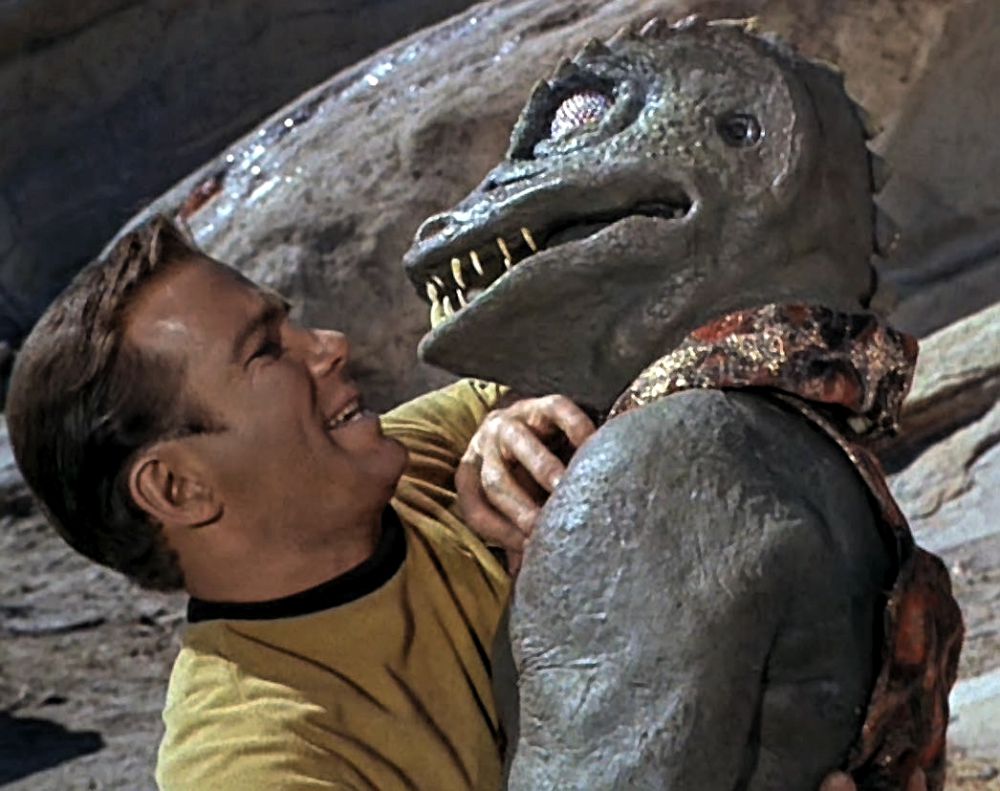Master of the Universe
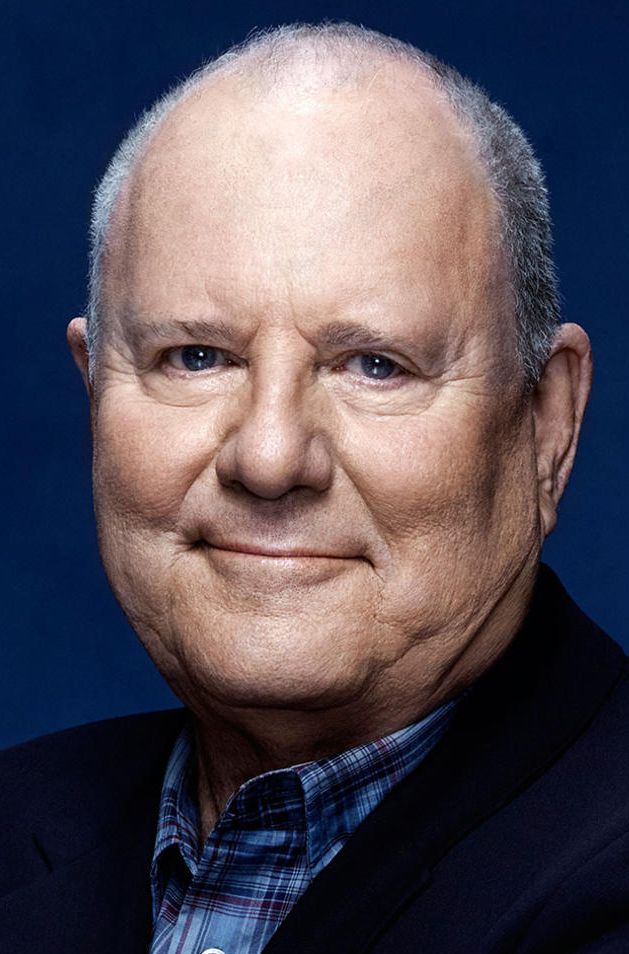
If the Borg from “Star Trek: The Next Generation” gave you nightmares, blame Michael Westmore. Ever laugh at the Ferengi? Thank Westmore. In fact, every alien in the “Star Trek” universe from “TNG” to “Voyager” to “Deep Space 9” to “Enterprise” was his baby. For 18 years, through four TV spinoffs and four movies, Westmore created a veritable universe of alien races.
“I can’t even begin to tell you how many; it’s got to run into thousands,” Westmore said of his creatures. “With the television show I designed for over 650 episodes if you count all the different series. It goes on and on and on and on.”
A fourth-generation makeup artist, Westmore said aliens were a little out of his line when he got a call to interview for “TNG.” Sure, he was one of Hollywood’s top makeup guys — he won an Academy Award for 1985’s “Mask”— but he wasn’t a Trekkie or much into space opera. A steady job, however, proved irresistible, and he enlisted in Star Fleet.
And now the UC Santa Barbara alumnus has come home. UCSB’s Art, Design & Architecture Museum (AD&AM) is exhibiting “Lifeforms: The Makeup Art of Michael Westmore” through Dec. 4. “I think they did a wonderful job,” Westmore said. “It’s just a wonderful team they put together to put it in. I was thrilled with it when I saw it.”
Westmore will return to campus Thursday, Oct. 6 for a screening of “Star Trek: First Contact,” for which he was nominated for an Oscar. A meet and greet begins at 5:30 p.m. at the AD&AM, with the film at 7 at the campus’s Pollock Theater. A Q&A with Westmore, moderated by the theater’s director, Matthew Ryan, will follow the screening. The event is free and open to the public, but reservations are recommended.
For Westmore, who would go on to win nine Emmys in 33 nominations during his “Star Trek” run, a good part of the job’s appeal lay in its creative freedom. “When I was hired by Gene Roddenberry and Rick Berman, they told me I can do anything I want except they want to be able to see the eyes,” he explained. “I could put contact lenses in their eyes with lizard lenses or any kind of lens I want. But they wanted to be able to have them blink and see their eyes, and they have to be able to talk, even if I put rubber lips on them, they still had to talk. We weren’t going to make ‘Star Wars’ bar characters. The aliens and the humanoids, they had to be able to communicate.”
Work on the set was non-stop. Westmore not only designed the various aliens, he also created the molds, made the nasty dentures worn by the Klingons and Ferengi and ran the two on-site laboratories. “We were shooting so fast; we shot a new episode every seven days,” he explained. “I had pre-production, production and post-production going at all times. So I really didn’t have time for them to say, ‘Nah, I don’t like that. Maybe do something else.’ There was no time for that. We were moving so fast. In movies, you want to try to create the ultimate alien. Well, I had no time for the ultimate alien.”
In all that rushing around, Westmore found the time to create some of TV’s most memorable aliens. Cardassians, Bajorans, the Borg, Jem’Hadar, Species 8472. He even managed to make the Klingons fiercer. He redesigned their foreheads and noses, and gave them scary teeth. He started by redesigning Lt. Worf, the Enterprise’s chief of security played by Michael Dorn. For other Klingon foreheads, Westmore turned to Earth’s prehistory for inspiration.
“I had discovered a book of dinosaurs that showed the skeletons,” he recalled. “It showed the vertebrae in all these different dinosaurs, whether it was a T. rex or a brontosaurus, and I literally used the dinosaur vertebrae as my research for the different foreheads.”
Using the animals of Earth for alien design proved to be a winning strategy, especially since he had to move quickly. He scoured bookstores for texts on animal physiology to add to his already huge office library. If a script called for a certain landscape, such as a desert, and particular behaviors, he’d research the animals found there. “If we land on a dry planet, what do we find? Tortoises, gila monsters, rattlesnakes,” Westmore said. “ And I would use these thoughts to create a character, and not just to make a person look like a snake or a turtle, but maybe use both of them.
“Another example is the Jem’Hadar,” he added, “where it was literally a dinosaur and a rhinoceros. If you look at all the pieces, you can see the rhinoceros between the hairdo and the dinosaur with the top of the head and everything. So I would use combinations of what people are familiar with to create my aliens.”
It’s fair to say that the production values — especially the aliens — of “TNG” and beyond were light years ahead of the original “Star Trek,” which ran from 1966 to 1969.
The legions of Trekkies who’ve seen every episode multiple times still cringe (or laugh) at the sight of Gorn, the man in the rubber lizard suit in the “Arena” episode. Westmore, however, said it’s not quite fair to compare the original series and the spinoffs. Looking back, he said, “they didn’t have a big budget then, and there was a gentleman who was making them as fast they could do Gorn or any of those things — the salt monster, the pig people — they literally didn’t have time or the budget to go to (makeup pioneer and mentor) John Chambers and have him design an appliance. They’d get the script and they’d be shooting quick.
“By the time we got to ‘Next Generation,’ compared to the ’60s original series, we still didn’t have a lot of time, but I had my lab right on the lot there,” Westmore added. “So I could get a script, and literally go to work right away or hire somebody else to give me a hand with it, where in the original series they didn’t have that.”
Westmore mentions time a lot — the lack of it and the speed with which it flew by in those 18 years of perpetual motion. He’s a member of a Hollywood dynasty; the Westmores have been doing makeup design at the major studios since 1917. The same man who created the Borg Queen for “First Contact” gave Robert De Niro a big nose and puffy eyes for “Raging Bull.” In “Star Trek” terms it was all part of a continuum, a river of faces and challenges.
“You know, it’s still all the same process as far as the basics go,” he observed. “You create the designs, you do the casting of faces, you sculpt, you make the rubber or silicon pieces, you paint them and apply them to an actor, and it doesn’t matter if it’s a beat-up face or an alien. It’s still the same process for me, what I’ve gone through in my career. It’s a matter of changing your creative direction. I really never stopped. I never got bored at work. There wasn’t any time I could go to sleep. I was in constant motion as soon as I walked on the lot until I went home.”
